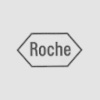Purpose
To describe the procedure for making western blot antigen strips for analysis of antigens or antibodies.
References
Western Blotting of Proteins, Clinical Biotechnology (1989); 1(1):43-49
Materials
- Antigen to be analyzed
- SOP-129 10X Tris-Glycine SDS Running Buffer
- RMS-170 4 - 15% Polyacrylamide Gradient Prep Gel
- SOP-130 5X SDS-PAGE Sample Buffer (reducing)
- RMS-171 Biotinylated Broad Range MW Markers
- 1X PBS (from SOP-104)
- 1X PBST20 (from SOP-103)
- SOP-131 10X Tris-Glycine Electrophoretic Transfer Buffer
- SOP-132 10% SDS
- RMS-142 Methanol
- RMS-172 PVDF
- RMS-173 Transfer Filter Paper
- RMS-174 Aquablock PP-82
Equipment
- Power Supply (BioRad Power Pack 200 (# 165-5052) or equivalent).
- BioRad Mini-Gel apparatus (BioRad 165-3125)
- BioRad Mini-Gel Transfer apparatus (BioRad 170-3930)
- BioIce container (frozen with DI water at -20°C) BioRad 170-3934
- Ruler and razor knife
Procedure
- Make 500 ml of Tris-Glycine running buffer by adding 50 ml 10X concentrate (SOP-129) to 450 ml DI water. Mix with two inversions of the graduated cylinder.
- Obtain a 4 - 15% polyacrylamide gradient gel and remove it from the package. Using a razor knife, cut the marked line on the gel covering and remove the plastic strip.
- Place the 4 - 15% gel into the gel cassette with the gel comb opening facing towards the inside buffer tank. Place the buffer dam into the other side. While pressing down on the top of the cassette, close the two levers to secure the gel in place.
- Gently remove the gel comb and lower the cassette into the buffer tank. Pour the 500 ml of 1X Tris-Glycine Running Buffer into the center of the gel cassette letting it overflow into the buffer tank. Using a 1 ml pipetter, rinse the sample area of the gel with running buffer.
- Add 95 µl 1X PBS to a screw cap microtube. Add 5 µl Biotinylated Broad Range MW Marker.
- To another screw cap microtube, add 200 µl of the antigen to be evaluated (protein concentration about 0.5 mg/ml).
- Heat the 5X reducing sample buffer until warm to the touch (about 5 seconds in the microwave). Add 25 µl to the marker tube and 50 µl to the antigen tube.
- Place the closed tubes in a boiling water bath for five minutes. Remove and let cool for five minutes.
- Add 5 µl marker to the marker lane. To load 10 µg/centimeter lane width, add 167 µl of antigen (67 µg for approximately 6.7 centimeter lane width) to the prep lane. For other amounts, adjust accordingly.
- Attach lid and set power supply for 200 V constant voltage and 55 minutes run time. Start the run. Initial power should read about 50 mA. The bromophenyl blue tracking dye elutes from the gel at approximately 35 - 45 minutes.
- Make 1000 ml Transfer Buffer by adding 100 ml 10X Tris-Glycine Trasfer Buffer, 5 ml 10% SDS and 50 ml Methanol to 850 ml DI water. Mix well and place at -20°C until the electrophoresis is complete.
- When the electrophoresis is finished, pour the contents to the sink and remove the cassette. Remove the gel, rinse in tap water and remove the plastic covering. Carefully remove the glass plate (leave gel attached to plastic plate) and let the gel fall off the plastic plate (glass side down) into 50 ml of transfer buffer in a clean pipette tip lid.
- Into another clean pipette tip lid, place a piece of marked PVDF (RMS-172)(cut off a corner or put a sharpie mark in one corner). Wet with 5 ml methanol (use 50% methanol/DI if a sharpie was used to mark the membrane). Rock until the papers are wet and decant. Add about 25 ml of transfer buffer.
- Place the remaining transfer buffer at 2 - 8°C and rotate both pipette tip lids at a setting of 2.5 for 30 minutes at room temperature.
- Place gel transfer cassette into a dish with the black side down and place a transfer sponge on the black side. Pour in 1X Transfer Buffer until the sponge is soaked. Lay down a piece of transfer filter paper (RMS-173) and the buffer equilibrated PVDF (marked side up). Remove the gel and place on top of the PVDF with the ridged (glass) side of the gel down. Place the wetted filter paper on top of the gel and roll the sandwich with a test tube to remove any bubbles. Place another sponge pad on top and close the cassette.
- Place the cassette holder, a frozen BioIce container and a small stir bar into the transfer buffer tank. Pour about 500 ml transfer buffer into the tank. Start to stir on a magnetic stir plate.
- Insert the gel cassette sandwich into the holder so that the black side of the cassette faces the red side of the holder and fill the tank the the top with additional transfer buffer. Attach the lid.
- Set the power supply for 100 V constant voltage and 60 minutes and start the run. Initial power should be approximately 240 mA.
- At the end of the run, remove the cassette and open it. Carefully remove the layers and place the PVDF into a pipette tip lid with approximately 30 - 40 ml of Aquablock PP-82 (RMS-174). Rotate at room temperature for 60 minutes.
- Remove the membrane from the Aquablock and dry overnight on a piece of transfer filter paper.
- Starting 1 cm from the marker side of the membrane, mark the top and bottom of the membrane at 3 mm intervals. Using a ruler and razor blade, cut into 3 mm strips. Leave about 3 mm at the top of each strip uncut. Carefully mark the top of each strip with a number running consecutively left to right and then cut the remaining membrane so the strips separate. Do not number the 1 cm wide marker strip and discard strip numbers 23 and above. Place the strips into a 15 ml screw-cap centrifuge tube and store at -20°C.
- Proceed to SOP-140 Developing Western Blot Antigen Strips.
















